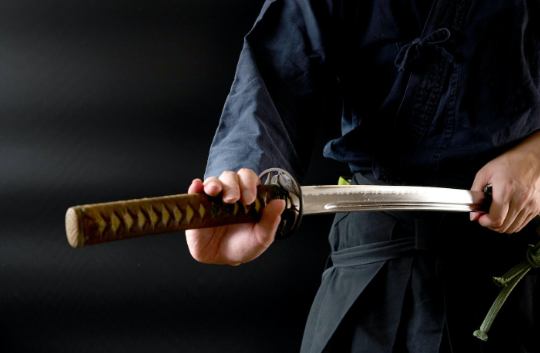The art of collecting Japanese swords, particularly katanas, is a journey into the rich history and craftsmanship of Japan. Katanas are not just weapons; they are cultural icons, embodying the samurai spirit and Japanese aesthetics. For beginners, entering this world can be both fascinating and daunting. This guide aims to demystify the process and provide essential tips for starting and maintaining a collection.
History and Significance of the Katana
The katana, with its curved, slender, single-edged blade, has a history that dates back to the Kamakura Period (1185–1333). Originally designed for samurai warriors, the katana is renowned for its beauty, strength, and sharpness. Each sword is a unique work of art, often containing inscriptions, and is a symbol of the samurai’s honor and virtues.
Choosing Your First Katana
When starting your collection, it’s crucial to determine your focus. Are you interested in antique katanas with historical significance, or modern replicas for practice and display? Authentic antique katanas are Japanese katana and can be expensive, so it’s essential to research and possibly consult with experts before purchasing. Modern replicas, while less valuable historically, offer affordability and are often made with traditional techniques.
Authenticity and Quality
Authenticity is key in katana collecting. Look for signatures (mei) on the tang (nakago) of the sword, but be aware that these can be forged. Assessing the quality of the blade, such as the hamon (temper line), and the condition of the metal are also critical. Beginners should consider https://www.truekatana.com/catalog/japanese-samurai-swords/katana advice from experienced collectors or appraisers.
Caring for Your Katana
Proper care and maintenance are vital to preserving a katana’s beauty and preventing damage.
Cleaning and Handling
- Cleaning: Regular cleaning is necessary to prevent rust and damage. Use a soft, clean cloth to wipe the blade after handling. For thorough cleaning, use rice paper, choji oil (a special protective oil), and uchiko (powdered ball used for polishing).
- Handling: Always handle your katana with respect and care. Avoid touching the blade with bare fingers as the oils from your skin can cause rust.
Storage
- Sayas (Scabbards): Store the katana in its saya to protect the blade. Ensure the saya is dry and clean.
- Environment: Keep your katana in a controlled environment, away from high humidity and extreme temperatures, to prevent rust and damage to the handle and saya.
Displaying Your Katana
Displaying your katana is a way to appreciate its beauty and craftsmanship. Use sword stands or racks that are designed for katanas. Position the katana horizontally with the edge facing up, and ensure it’s secure to prevent accidents.
Expanding Your Collection
As your interest grows, you might want to expand your collection. Attending sword shows, joining collector groups, and participating in online forums are great ways to learn and find new pieces. Remember, quality over quantity should be your mantra.
Understanding the Legal Aspects
Before starting your collection, familiarize yourself with the legal aspects of owning and collecting katanas in your country. Laws vary, and it’s essential to ensure you
are compliant with importation, ownership, and display regulations. Some countries have strict rules regarding the acquisition and ownership of antique blades, requiring registration and proof of historical significance.
Ethical Considerations in Collecting
Ethical collecting is crucial, especially when it involves historical artifacts like antique katanas. Ensure that the swords in your collection are acquired legally and ethically. Be wary of the illegal trade in cultural artifacts and avoid contributing to the loss of cultural heritage.
Learning and Research
Knowledge is a critical aspect of katana collecting. Learn about the different types of Japanese swords, the historical periods they belong to, the famous swordsmiths, and the various styles of sword-making. Books, documentaries, and online resources can provide valuable information. Joining clubs or societies dedicated to Japanese swords can also enhance your knowledge and appreciation.
Resources for Learning
- Books: Numerous books are available on the subject, ranging from beginner guides to detailed scholarly works.
- Museums and Exhibitions: Visiting museums that display Japanese swords or attending exhibitions can be highly educational.
- Online Forums and Communities: Engage with online communities where collectors and enthusiasts share knowledge and experiences.
Maintenance and Restoration
Over time, your katana may require maintenance or restoration. This should be done by professionals who specialize in Japanese swords. Restoration can include polishing, repairing the saya, or rewrapping the handle. It’s important to choose a skilled and reputable professional for these services to preserve the sword’s integrity and value.
Investing in Quality
As with any collectible, investing in quality pieces is more rewarding in the long run. Quality katanas retain their value and are more likely to appreciate over time. They also offer a more authentic and satisfying collecting experience.
Read Also: Palmeiras Football Club
Conclusion
Collecting and caring for Japanese swords is a rewarding hobby that connects you with a rich cultural history and the art of sword-making. As a beginner, take your time to learn, start with what you can afford, and gradually build your collection. Remember, each katana has its story, and as a collector, you become a part of that story. Embrace the journey and respect the legacy of the samurai through these exquisite pieces of art and history.


